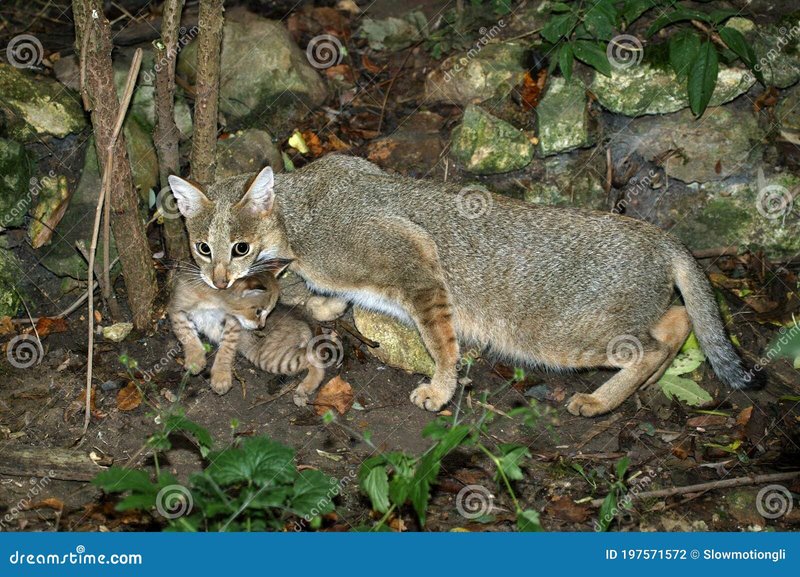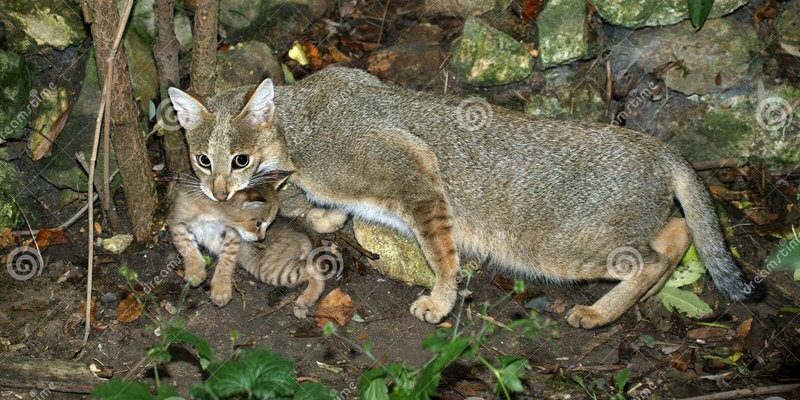
So, how do these highly adaptable felines manage to nurture their little ones amidst the challenges of their natural habitat? Let’s dive into this topic and explore the intricate world of jungle cat parenting. Picture it as a behind-the-scenes look at a wildlife documentary, where every moment is filled with drama, affection, and the instinctual drive to thrive.
Understanding Jungle Cats
Jungle cats, also known by their scientific name *Felis chaus*, are medium-sized felines found in various habitats, including swamps, wetlands, and forests in Asia and parts of the Middle East. Unlike domestic cats, jungle cats thrive in wild environments, which means they face unique challenges in raising their young. Their elegant coats, agile bodies, and keen senses make them skilled hunters, but they also need to rely on their instincts to ensure the survival of their offspring.
These cats typically weigh between 15 to 35 pounds and are known for their long legs and distinctive features like tufted ears. They’re solitary by nature, and while they may be fiercely independent, the bond between a mother and her kittens is strong and crucial for their survival. Here’s the thing: understanding their behavior helps us appreciate the efforts mothers put into raising their young and the challenges they face in the wild.
Gestation and Birth of Kittens
The first stage of jungle cat parenting begins well before the kittens even arrive. Jungle cats have a gestation period of about 60 to 70 days. During this time, the mother cat prepares herself for motherhood. She seeks out a safe den—often hidden in dense vegetation or abandoned animal burrows—where she can give birth and care for her little ones without the threat of predators.
When the big day finally arrives, she’ll typically give birth to a litter of 2 to 5 kittens. These tiny furballs are born blind and helpless, relying on their mother for warmth, food, and protection. Imagine a new mom carefully grooming her kittens, using her body heat to keep them cozy and safe. This initial bond is vital, as it ensures the kittens remain close to their mother, preventing them from straying into dangerous territory.
Caring for the Kittens
Once the kittens are born, the mother jungle cat takes on the role of a dedicated caregiver. She provides her young with milk, which is packed with nutrients to help them grow strong. As they develop, they begin to explore their surroundings, and that’s where her protective instincts kick in. You might wonder how she balances feeding and nurturing while keeping an eye out for threats—it’s no small feat!
For the first few weeks, she keeps her kittens hidden in the den. This strategy minimizes the risk of predators, like larger cats or birds of prey, spotting them. As the kittens grow and gain confidence, the mother gradually allows them to venture out for short explorations under her watchful eye. This isn’t just a chance for fun; it’s essential for their development as they learn about their environment and practice critical hunting skills.
Teaching Hunting Skills
As the kittens grow older, the mother jungle cat begins to teach them the art of hunting. This process usually starts when the kittens are about 6 to 8 weeks old. At this age, they’re curious and playful, which makes it the perfect time for their mother to introduce them to her hunting techniques. You can picture her patiently stalking through the tall grass, demonstrating the stealth and agility needed to catch prey, like birds or rodents.
During these lessons, she encourages her kittens to practice, letting them chase after small animals or even play with leaves and sticks. It might look like a game, but this is all part of their essential training. It’s crucial for the young cats to learn how to hunt on their own before they reach adulthood at around 1 year old. By then, they’ll be equipped with the skills necessary to survive in the wild.
Leaving the Nest
After several months of nurturing, teaching, and bonding, the time comes for the young jungle cats to leave their mother. This is a bittersweet moment; she has devoted all her energy to raising them, and now they’ll embark on their own journeys. Typically, the kittens begin to explore their surroundings more independently at about 4 to 6 months old.
Here’s the thing: while they may initially stay close to their mother for safety, the urge to find their own territory becomes strong. It’s a natural part of growing up. They may establish their own homes, but they will always carry the lessons learned from their mother. This transition is vital for ensuring the continuation of their species, as it allows them to establish their own territories and find mates.
The Importance of Territory
Territory plays a significant role in the lives of jungle cats, especially for mothers raising their young. A mother typically establishes a hunting ground that provides sufficient food and shelter for her kittens. Think of it as her stage—she sets the scene for their growth and survival.
By marking her territory with scent markings, she signals to other jungle cats that this area is occupied. This behavior helps protect her kittens from potential threats. The mother’s ability to choose a safe and resource-rich territory directly influences her young’s chances of survival. If resources are scarce, she may need to relocate to ensure her kittens get the nourishment they need.
Challenges and Threats
While jungle cats are resilient and adaptable, they still face numerous challenges in the wild. Habitat loss due to human encroachment is a serious threat, as it reduces the space available for them to hunt and raise their young. Additionally, pollution and climate change affect their prey availability, putting additional strain on the mother as she tries to provide for her kittens.
Predators are another significant concern. Young kittens are particularly vulnerable in their first few months, as they’re still learning how to safeguard themselves. Here’s where a mother’s vigilance is crucial—she must be aware of her surroundings at all times. Nature is harsh, but it’s also amazing to witness how these cats navigate their world with instinct and care.
Raising young jungle cats in the wild is a complex blend of nurturing, teaching, and survival instincts. From the moment the kittens are born until they set off on their own, every step is filled with challenges and triumphs. Understanding this process gives us a deeper appreciation for these remarkable animals and the dedication of jungle cat mothers.
So next time you think of jungle cats, remember the incredible journey of a mother cat and her kittens. The wild is their home, full of dangers and adventures, and every little moment shapes the future of these beautiful creatures. They may be small, but their determination to survive—and their mother’s efforts to guide them—are what keep the jungle alive and thriving.

